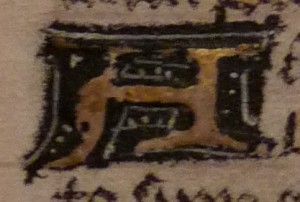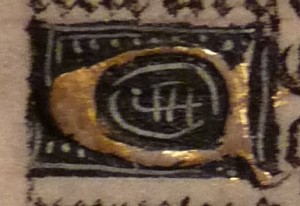The medieval manuscripts that are admired the most are often those with lavish decorations. Their detailed paintings with gold leaf are one of the highlights in western art. But we should keep in mind that not everybody could buy these manuscripts in the Middle Ages. Many less richly decorated manuscripts must have circulated at the time. The decoration often tells us something about the social status of the patron of the codex.
Most manuscripts have at least some sort of decoration. These decorations range from simple rubrications (?) – such as highlighted capitals, underscored words, headings (?) and paragraph marks – to miniatures (?) with lush illustrations the size of a full page with gold leaf additions. These decorations are often not mere illustrations to the text, but are an aid to understand its structure.
Decorated initials, for instance, are nearly always used in hierarchical order. The most beautiful initial in the manuscript can usually be found at the beginning of the first text. Every new text may open with a similar beautiful initial, but the chapters of every text will have a more simple initial, while every new paragraph will have an initial that is more simple still.
Whereas plain red initials are at the bottom of the hierarchy, the painted initials (with or without gold leaf) are at the top. They can be found on the first page of a manuscript or, when the patron could afford to pay for it, at the beginning of every text in the codex. Often these initials contain animals and people that may be connected to the text.
For more pictures of beautiful manuscripts, you can visit the websites of many important national and university libraries. Most of them will have an online exhibit of their treasures (e.g. the Royal Library in The Hague). For a glimpse at some marvellous pictures of the most well known type of decorated manuscript, the fifteenth century bestseller, the book of hours, click here.
For information on manuscript pages and script, click here.
Or you can return to the entrance of this room.


